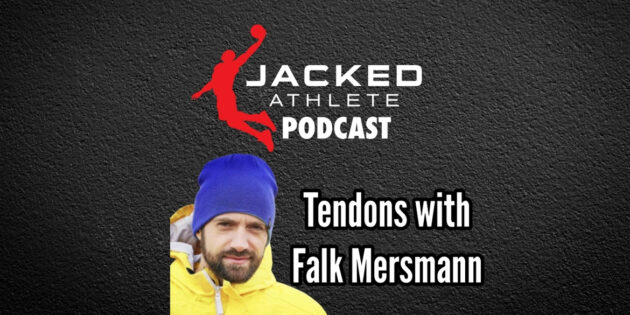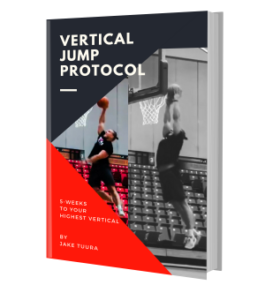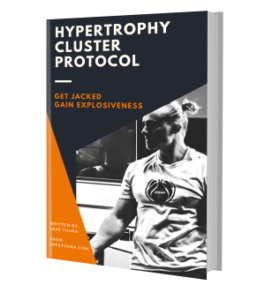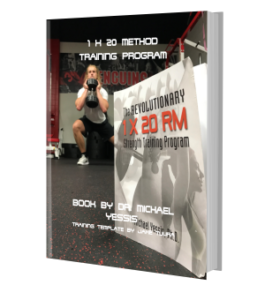https://podcasts.apple.com/us/podcast/jacked-athlete-podcast/id1462537296?i=1000699042161
“So basically all of tendon adaptation is strain mediated. That is the most important mechanical factor.”
“Metabolic factors, they may play a role, of course, at a given amount of mechanical loading. But in comparison to mechanical loading, not as important. So it’s a minor factor.”
“When the stimulus for the tendon is more or less saturated in terms of the overall volume of mechanical loading which is necessary to stimulate the tendon metabolism, that basically additional mechanical loading may just lead to, let’s say, more wear of the tissue and increase the catabolic side of the response.”
“So any loading increases both anabolic and catabolic responses but if the anabolic responses start to level off at a certain point, then just adding mechanical loading may in the end either reduce the effectiveness or let’s think about really elite athletes which train 11 times a week or something like that. It may be actually too much for the capacity of the tendon to repair the microdamage that is associated with mechanical loading.”
“Tendon cells, which are actually stimulated due to a loading cycle, reduces with high strain rates. So in our view, physiological stimulus for the tendon, high loading is good, but at rather lower strain rates and longer strain durations.”
“Usually if you have a high strain rate, you also have a short loading duration in terms of sprinting, jumping, change of direction, something like that. So this usually comes in combination and we see as I said that many tendon cells are not receiving the stimulus because maybe the distribution of strain within the tendon tissue is not as homogeneous as when the strain is applied more slowly.”
“If you strain the tendon until failure, at very high strain rates, you cause more localized failure and at very low strain rates you cause more global or more distributed indications of failure, which if we go to the physiological level, suggests the idea that the strain distribution is more homogeneous if the strain is applied rather slowly.”
“With isometrics or heavy-slow resistance training, we consistently see increases in stiffness when the load magnitude is high enough. And then we have these studies on plyometric loading, and there the responses are very inhomogeneous.”
“80 % or 90 % of an isometric MVC for example or 90 % of a repetition maximum. That is actually, as you said, for a person who already has a deficit in tendon stiffness, this loading would actually lead to very high strains, higher than necessary to provide a good stimulus for tendon adaptation and also maybe putting in a predisposition to develop overuse injury.”
“We had some athletes which had a deficit in muscle strength. This is rather rare, but it exists.”
Muscle deficit: “We try to find a mode of loading that is known to increase muscle mass and strength, but not so much provides stimulus for tendon adaptation. And so we chose medium loading, dynamic training, until muscular fatigue. So this metabolic stress, as we start to begin to understand, is not really a good driver for tendon adaptation and in these individuals at moderate loads the strain of the tendon was also not too high so what we actually achieved in this few individuals is that muscle strength increased more than tendon stiffness so restoring the balance.”
“And the last subset of people which is actually quite a substantial amount so between depending on the cohorts 25 to maybe 40 percent of the athletes who have a deficit in tendon stiffness. And that means they do not need to train at very high levels of muscle force generation, quite individually between, let’s say, 50 and 75 % of their MVC. And since the overall loading volume that we subscribe is rather low, the muscle adaptation is not promoted to a great extent.”
“So on the global level, these viscoelastic properties of tendons do not really show to a great extent, almost nonexistent. But we believe that within the tendon, these viscoelastic properties actually greatly affect, for example, how tenocytes are stimulated, how single fascicles are mechanically loaded, and also the loading gradients within the tissue may be very much affected by the extracellular matrix of the tendon and the mechanotransduction between fibers and fascicles.”
Rupture from slow constant strain: “This is what we do not see in vivo because usually the muscle would fatigue prior to the actual failure of the tendon.”
“Both with dynamic cyclic loading and constant isometric loading, they were not able to show this creep effect in tendons. So initially, so this preconditioning effect, this is actually observable, basically then indications for failure, let’s say, we do not see it in people. We don’t, no. yeah, nevertheless, basically what the ideas we are sharing with, for example, Keith Barr here is that there is stress relaxation within the tendon. We believe it’s not an important phenomenon on global tendon strain that really has an effect on, for example, performance or something like that.”
“From my point of view, 30 seconds contractions in terms of changing tendon mechanical properties, it’s unnecessarily long. I would reduce it.”
“Focusing on the tendon mechanical properties, I would argue that the type of loading, the contraction type doesn’t matter too much and it’s better to use a little bit more loading cycles than extensively long contraction.”
“For the Achilles, we can assume that this [compliance] is rather consistent in chronic cases. And that means that with our recommendations of rather high intensities of contractions, it may actually be that the loading is unnecessarily high.”
“There is certainly a connection between mechanical, structural and clinical aspects of tendinopathy, but how these aspects are connected is very individual and really hard to predict.”
“Until now, or in almost every study I would say, we actually do not know the degree of mechanical loading that was applied to the tendon of the patients because usually the loading is defined with regard to 1 repetition maximum or isometric maximum or something like that. So we focus on the muscle capacity and to patients with the same exercise intensity, the actual strain on the tendon can be very different. And maybe there are some good results with regard to low or moderate loads because the strain of the tendon was actually high.”
“This viscoelastic property may lead to a lower number of tenocytes receiving effective stimulation and also let’s say inhomogeneous development of the mechanical micro damage that affects some fascicles maybe more than others at high loading rates and that more homogeneous mechanical loads to the tissue with a homogeneous simulation of the tenocytes basically leads to a better possibility to also repair the tissue.”
“With regards to the ultimate strain of tendon, there is a striking consistency across tendons and even across species. So we are very confident that our general recommendations, that they apply to all human tendons.”
“We receive some feedback of course from the practical field, for example elbow tendinopathy or infraspinatus tendinopathy. And what we receive as feedback is very positive that the approaches provide good outcomes.”
“During one acute bout of loading, usually the muscle would fatigue earlier than the tendon. But if you give the muscle some rest to recover and you train over several days, multiple times a day, then you reach a point where the tendon seems to be mechanically worn off or there’s an accumulation of micro damage in the tendon which cannot be compensated for by its metabolism. And then this leads, for example, to a decrease in tendon stiffness and maybe potentially also overload in the long or in midterm.”
“This Alfredson loading protocol, in my view, the mechanical loading provided with this protocol is way too much. Still it has good outcomes in terms of pain in lot of cases, but in terms of tendon structure and tendon mechanical properties, the outcomes are not so convincing.”
“Of course it’s extremely important for sports performance to use plyometrics because it’s very well capable of improving your muscular function, and particularly the muscle-tendon interaction aspect.”
“So particularly, if you’re ambitious, if you train maybe more than three or more sessions per week in jump-intensive sports like basketball, general the game sports and jump disciplines from the track and field. My strong suggestion would be to implement this on a regular basis, maybe three times a week, three to five sets with four repetitions of moderate duration, three to six seconds, contraction duration, rather high loads. These are the general recommendations.”
Website: https://www.spowi.hu-berlin.de/en/institut-en/tbw-en/Members/mersmann
Email: falk.mersmann@hu-berlin.de



